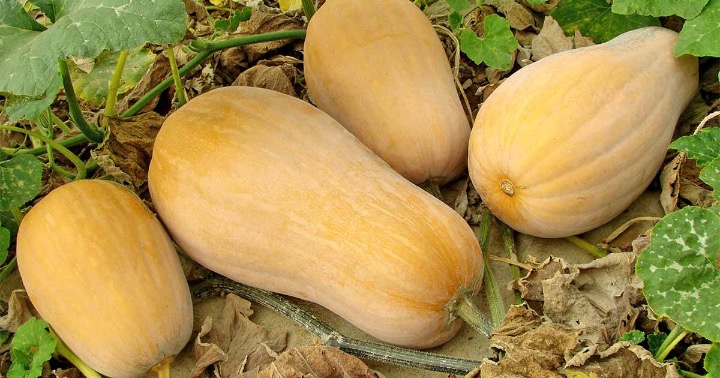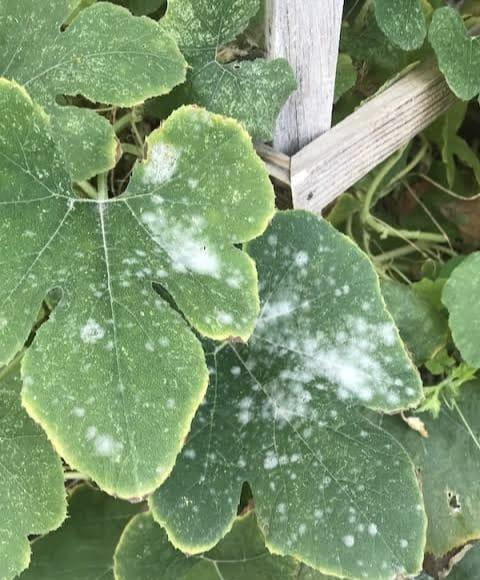Winter Squash Plant
Winter squash, an annual, needs fertile, well-drained soil and full sun. It's fast-growing but sensitive to frost. Regular watering promotes fruiting.
Habit
Annual
Height
2 to 3 m
Growth
Fast
Soil
Well-drained, Sandy Loam
Shade
Full Sun
Moisture
Moist
Edible
Yes
Medicinal
No
Origin
Central America
Climatic Condition
Tropical, Subtropical
Temperature (°)
15°C to 30°C
Humidity (%)
50% to 70%
Potting media
50% Loam, 40% Sand, 10% Compost
Fertilizers
Balanced Fertilizers
Watering
Regular watering
Plant Weight
2 to 5 kg
Flowering Time
Fall to Winter
Soil Ph level
6.0 to 7.5
Water Ph level
6.0 to 7.0
Soil EC
0.5 to 1.0 mS/cm
Yield Per Plant
10 to 15 kg per plant
NPK ratio
10:10:10
life Span
1 to 2 years
Health Benefits
High in Vitamin A, Antioxidant
Suggested Grow Media or Potting Mix ?
50% loamy soil, 30% compost, 20% sand
Suggested Fertigation/Fertilizers
Fertilize every 2-3 weeks with a balanced fertilizer.
Common Diseases and Remedies
Powdery Mildew , Alternaria leaf blight .
Pale yellow leaf spots , Brown spots with yellow halo. Spots often have concentric rings.
Neem oil , hot water or bleach solution
HEALTH BENEFITS
· Rich in Nutrients: High in vitamins A, C, and fiber, supporting immune health and digestion.
· Heart Health: Contains potassium, which helps regulate blood pressure.
· Eye Health: Beta-carotene supports vision and skin health.
Antioxidant Properties: Helps reduce inflammation and oxidative stress.
What Is An Winter squash Tree?
Winter squash plants have a place with the Cucurbita class and are portrayed by their rambling plants and huge, hard-cleaned natural products. These plants are individuals from the gourd family, which incorporates different sorts, for example, butternut squash, oak seed squash, and spaghetti squash.
Winter squash plants ordinarily flourish in warm environments with a lot of daylight. They require all around depleted soil and more than adequate space to spread their plants, making them reasonable for garden beds or enormous holders.

What Are The Different Types Of Winter squash Plants?
1. Butternut Squash
Known for its smooth, tan skin and sweet, nutty flavor, butternut squash is flexible and famous in different dishes, from soups to cooked vegetables.
2. Acorn Squash
Named for its oak seed like shape, this squash has a dim green skin with profound edges. It has a gentle, somewhat sweet flavor and is frequently heated or cooked.
3. Spaghetti Squash
When cooked, the tissue of spaghetti squash isolates into long, spaghetti-like strands. It tastes really gentle and is much of the time utilized as a low-carb option in contrast to pasta.
4. Hubbard Squash
Hubbard squash comes in different varieties, including blue, green, and orange. It has a sweet, rich flavor and thick tissue, making it ideal for baking and soups.
5. Kabocha Squash
Otherwise called Japanese pumpkin, kabocha squash has a dark green or orange skin and sweet, rich tissue. It's regularly utilized in Asian foods for soups, stews, and tempura.

How to Care Winter squash Plant ?
1. Location
Winter squash plants flourish in areas with warm temperatures and a lot of daylight. Preferably, they ought to be established in very much depleted soil with a pH level somewhere in the range of 6.0 and 6.8. They require an ice free developing season, so it's ideal to establish them after the last ice date in your space.
2. Sunshine
Without adequate daylight, winter squash plants might become leggy, have decreased organic product creation, or foster low quality natural products. Subsequently, fundamental to pick an establishing area gives more than adequate daylight over the course of the day, particularly during the developing season.
3. Soil
Winter squash plants don't endure waterlogged soil, so guaranteeing legitimate drainage is fundamental. Sandy topsoil or loamy soil types are best as they permit abundance water to deplete away, forestalling root decay and other water-related issues.
4. Hydration
Give a profound watering to the root zone of the plants, it is equally wet yet not waterlogged to guarantee the dirt. Intend to water the plants profoundly more than once per week, contingent upon weather patterns and soil dampness levels. In warm and dry environments, more regular watering might be essential.
5. Nourishment
Prior to planting, alter the dirt with natural matter, for example, fertilizer or very much spoiled excrement to give fundamental supplements. Furthermore, during the developing season, you can apply a reasonable compost (e.g., 10-10-10) or a manure explicitly formed for vegetables. Adhere to the producer's directions for application rates and recurrence.

6.Issues
Common pests that may affect winter squash plants include squash bugs, squash vine borers, cucumber beetles, and aphids. These pests can cause damage to foliage, stems, and fruits, leading to stunted growth, wilting, and reduced yields. Regular inspection and early intervention with insecticidal sprays or organic pest control methods can help manage pest infestations.
What are the Benefits of Winter squash Plant ?
1. *Nutritional Value*: Winter squash varieties such as butternut squash, acorn squash, and kabocha squash are rich in essential nutrients like vitamins A, C, and E, as well as dietary fiber, potassium, and antioxidants. Including winter squash in your diet can support overall health and wellness.
2. *Versatility in Cooking*: Winter squash is incredibly versatile in the kitchen and can be used in a wide range of recipes, from soups and stews to salads, casseroles, and even desserts. Its sweet, nutty flavor adds depth to dishes, making it a popular ingredient in both savory and sweet recipes
FAQs About Growing Squash
1. how to maintain winter squash plant ?
Provide consistent and adequate watering to keep the soil evenly moist but not waterlogged. Water deeply at the base of the plants, especially during dry periods, to encourage strong root development and prevent moisture stress.
2. what are the uses of winter squash plant?
Winter squash varieties like butternut squash, acorn squash, and spaghetti squash are versatile ingredients in cooking. They can be roasted, baked, steamed, boiled, or sautéed and used in a wide range of dishes, including soups, stews, casseroles, salads, risottos, and even desserts like pies and muffins. The sweet, nutty flavor and creamy texture of winter squash make them a popular choice in both savory and sweet recipes.
3. can i grow winter squash plant indoor ?
Winter squash plants need plenty of sunlight to thrive, so choose a sunny location indoors with at least 6 to 8 hours of direct sunlight per day. Place the plants near a south-facing window or use supplemental grow lights to provide sufficient light for healthy growth.
4. which pot is best for growing winter squash plant?
Choose a large container with a minimum size of 5 gallons for each winter squash plant. Larger varieties may require even larger containers to accommodate their extensive root systems and vine growth. Ensure the pot has enough depth and width to support the plant's growth throughout the growing season.
5. from where can i shop winter squash plant?
Visit your local nursery or garden center, especially during the spring and summer months when they typically have a wide selection of vegetable seedlings and plants, including winter squash varieties. Nursery staff can also provide advice on plant selection and care


